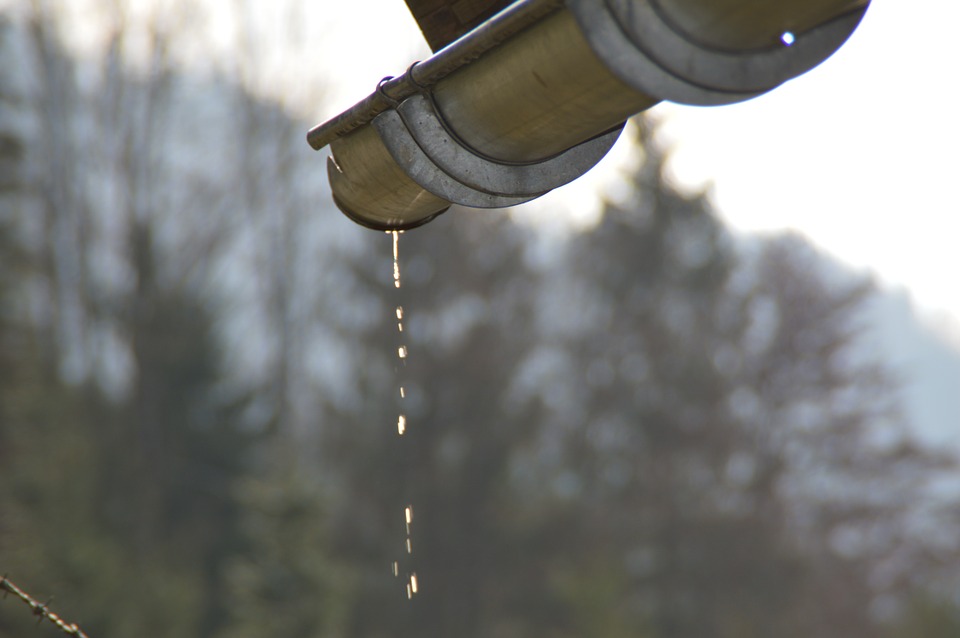
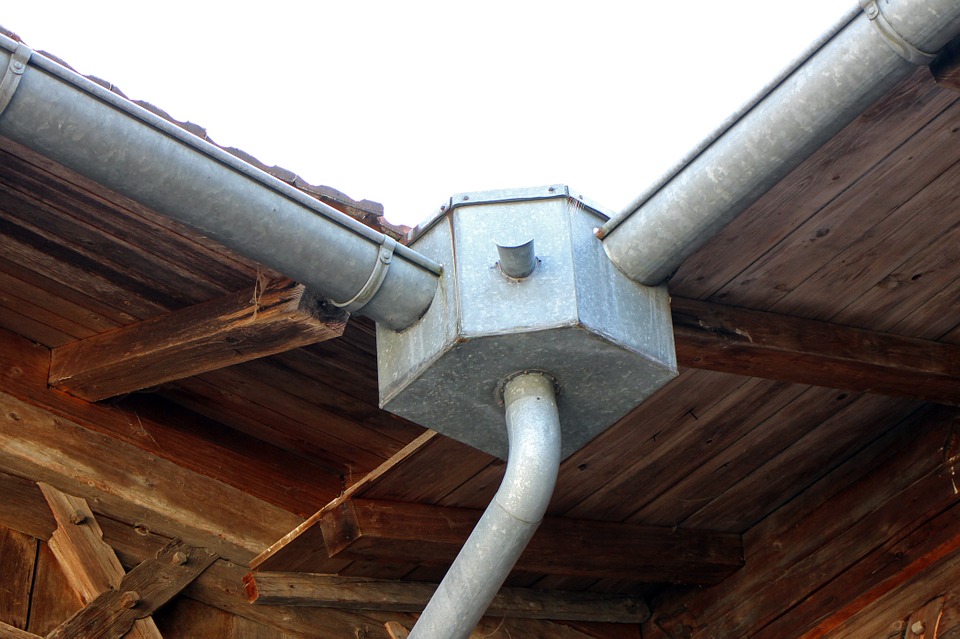
Collects Rain Water for Primary and Secondary Use
Water is our most precious natural resource and something that most of us take for granted. We are now increasingly becoming aware of the importance of water to our survival and its limited supply, especially in a city like ours.
The harvesting of rainwater simply involves the collection of water from surfaces on which rain falls, and subsequently storing this water for later use. Normally water is collected from the roofs of buildings and stored in rainwater tanks. Water can also be collected in dams from rain falling on the ground and producing runoff.
How?
The collection of rainwater from the roofs of buildings can easily take place within our cities. All that is necessary to capture this water is to direct the flow of rainwater from roof gutters to a rainwater storage tank. By doing this, water can be collected, the wells are recharged, and the water can be filtered and used for various uses, sometimes even drinking based on quality of water. Either way, the water collected can be considered to be precious.
Advantages of Rainwater Harvesting
- Provides self-sufficiency to your water supply.
- Reduces the cost of pumping of ground water.
- Provides high quality water, soft and low in minerals.
- Improves the quality of ground water through dilution when recharged to ground water.
- The roof top rainwater harvesting is less expensive, easy to construct, operate and maintain.
- Rainwater harvesting systems are simple which individuals can adopt.
- On Islands, due to limited extent of fresh water aquifers, Rainwater harvesting is the most preferred source of water for domestic use.
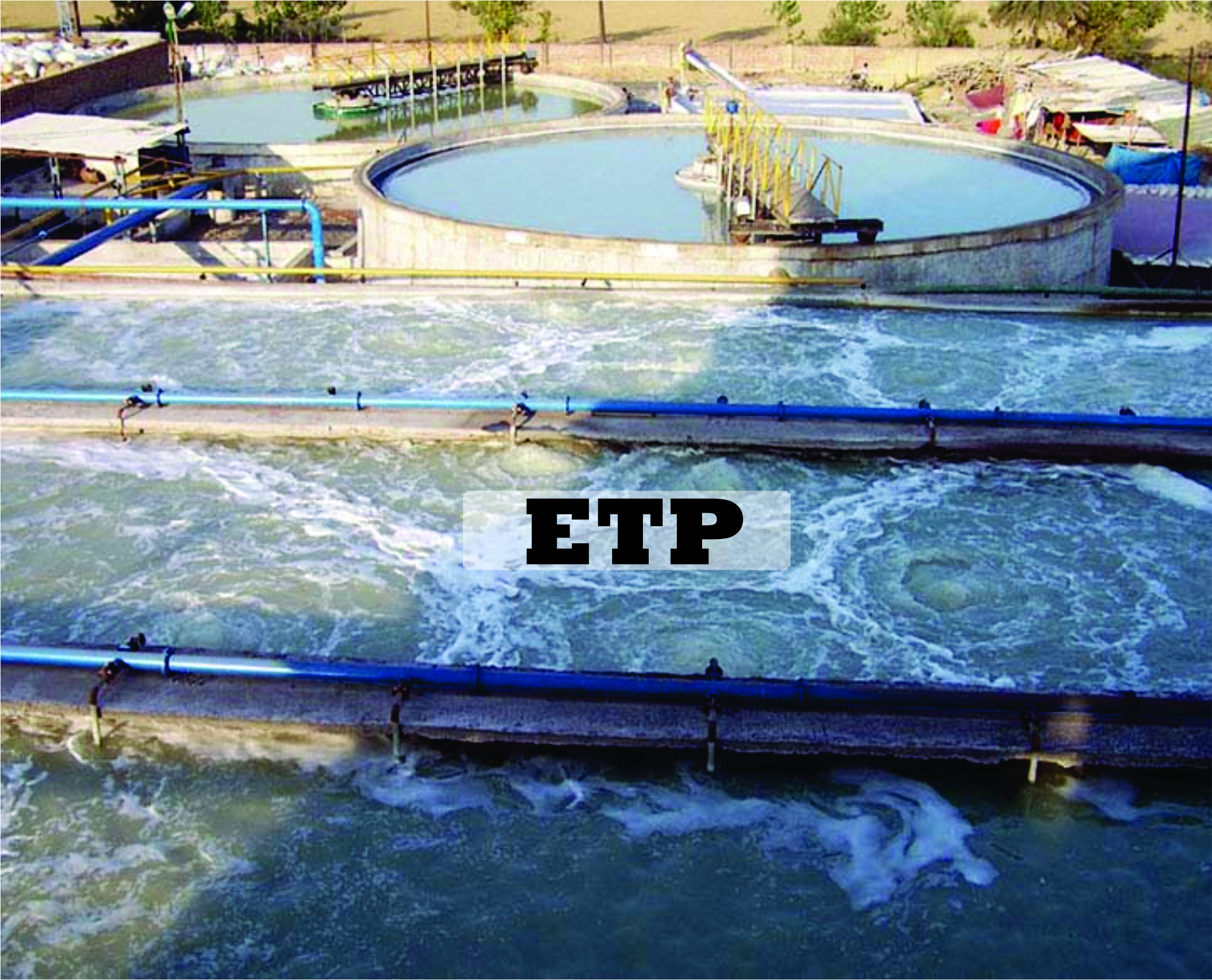
Effluent Treatment Plants
The Effluent Treatment Plant is made to treat the effluents from the factories, which can be reused for secondary purposes in the factory. The waste water from industries is contaminated with by-products, washing and cleaning agents, solvents etc. The plant is designed to treat the waste water so that the clean water then can be discharged safely into the environment or could be used in the factory itself.
Advantages of ETP :
- Reduce off-site treatment cost
- Unnecessary water usage during the processing is eliminated
- Makes your industry self-sustainable
- Helps reduce the contamination of natural water bodies and make the environment safe for others
- This is the most cost-effective and environmental-friendly method
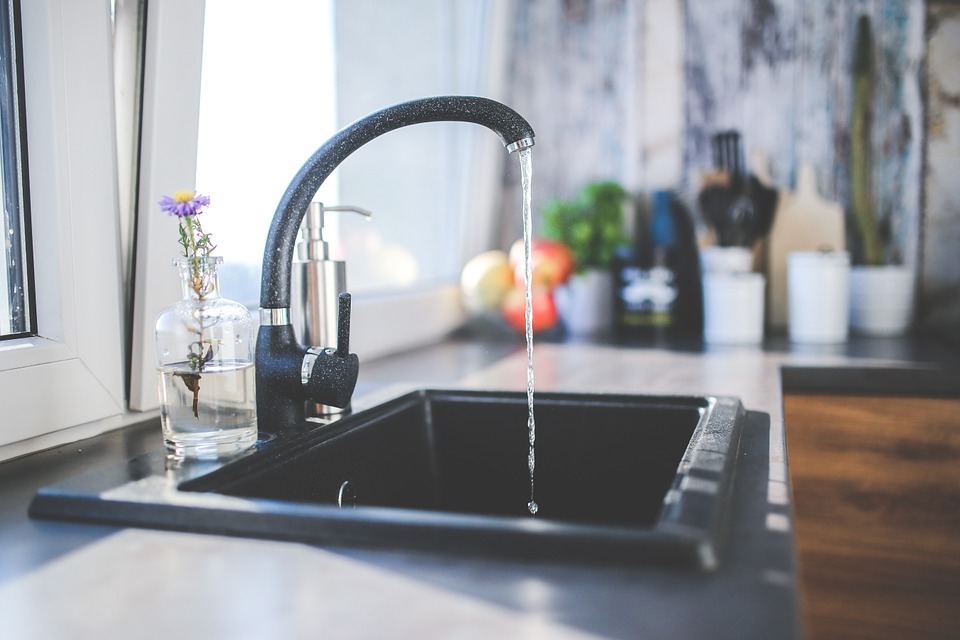
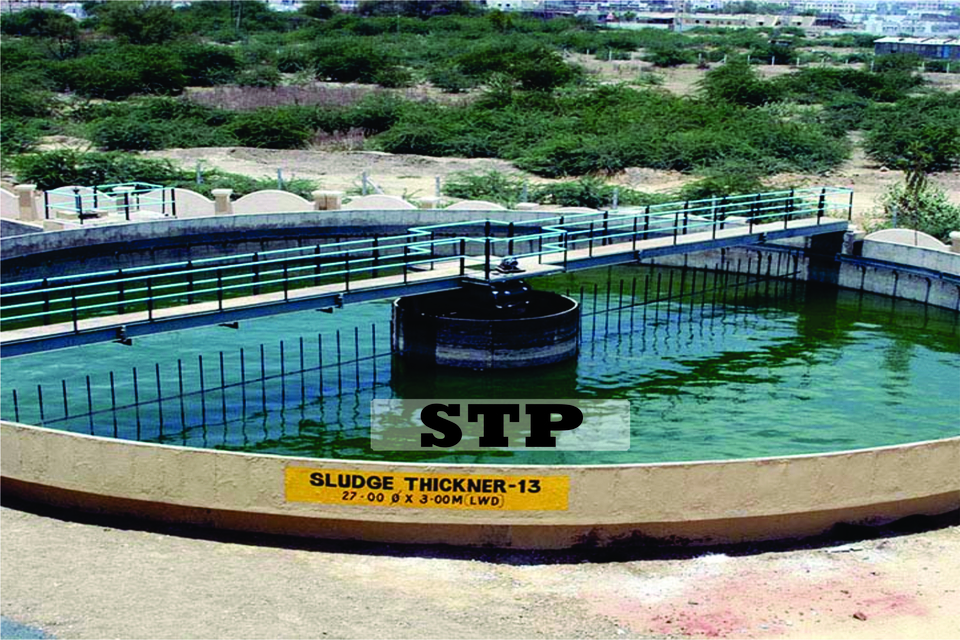
Sewage Treatment Plants
Converts black water to usable water for flushing, gardening, car washing etc.
Sewage treatment is the process of removing contaminants from wastewater, primarily from household sewage. It includes physical, chemical, and biological processes to remove these contaminants and produce environmentally safe treated wastewater. A by-product of sewage treatment is usually a semi-solid waste or slurry, called sewage sludge, that has to undergo further treatment before being suitable for disposal or land application.
Sewage treatment may also be referred to as wastewater treatment, although the latter is a broader term which can also be applied to purely industrial wastewater. For most cities, the sewer system will also carry a proportion of industrial effluent to the sewage treatment plant which has usually received pretreatment at the factories themselves to reduce the pollutant load. If the sewer system is a combined sewer then it will also carry urban runoff (stormwater) to the sewage water treatment plant.
We provide wide range of sewage treatment solutions with outstanding performance and efficiency. Each of our systems are optimally designed to provide economical solution for reuse of water. The systems are engineered considering physical, chemical and biological parameters in order to obtain a suitable quality of water for reuse application like gardening, cleaning, washing etc.
Advantages
- Capable of removing 90% of suspended solids
- Biological nitrification without adding chemicals
- Oxidation and nitration achieved
- Easily maintained mechanical work
- Biological phosphorous removal
- Solids and liquids separation
- Removes organics
- Cost effective
- Self sustaining system
Methodology for water treatment:
- Specific treatment to reduce iron, mangnese and arsenic or to thoroughly remove dissolved organic matter and micro-pollutants.
- Clarification and filtration to remove mineral and organic suspended solids and some dissolved organic matter from raw water.
- Desalination of sea water.
- Disinfection prior to delivery.
Grey Water Treatment Plant
Treat waste water from sinks and baths and reuse for flushing, car wash and gardening !
Greywater can be defined as any domestic wastewater produced, excluding sewage. It is the waste water from the sink and shower in bathrooms. The main difference between greywater and sewage (or blackwater) is the organic loading.
The waste water generated in bathrooms of houses & hotels (includes sink, shower & baths) or sometimes from washing machines at home; is called as Grey Water. Grey water, by definition,doesn’t include any human waste or any fecal contaminated waste water. This water is collected and treated and can be reused for flushing.
60% of Potable water per capita, ends up with Waste water during bathing (50Litres), brushing (5Litres), Washing (20Litres), totalling to 75 Litres; which can easily be reclaimed through GWTP (Grey Water Treatment Plant).
Two Major Benefits of Grey Water Use are:
Reducing the need for fresh water. Saving on fresh water use can significantly reduce household water bills, but also has a broader community benefit in reducing demands on public water supply.
Reducing the amount of wastewater entering sewers or on-site treatment systems. Again, this can benefit the individual household, but also the broader community.
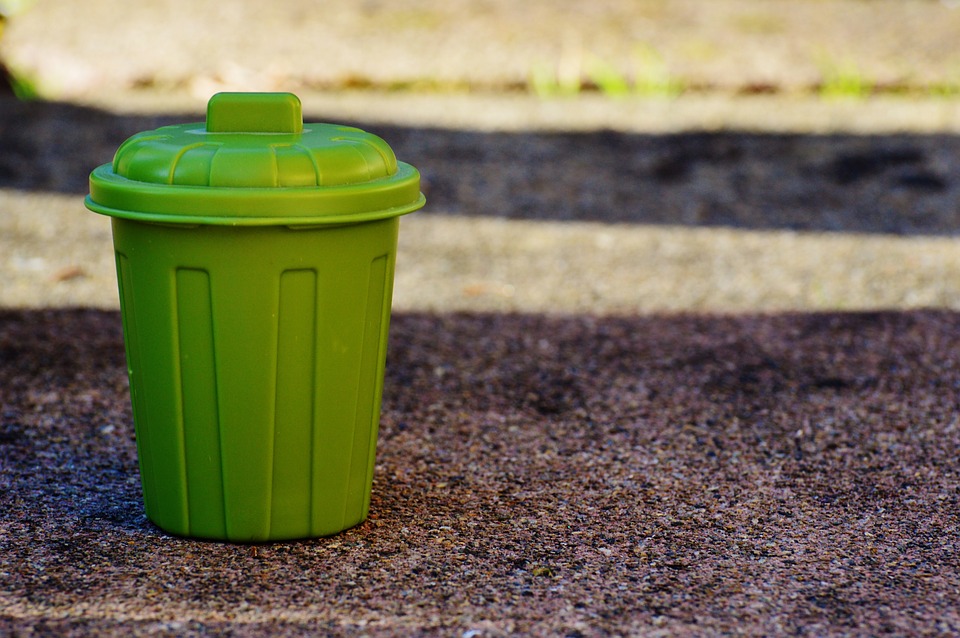
Waste Management
Solid waste is the unwanted or useless solid materials generated fro combined residential, industrial and commercial activities in a given area. It may be categorised to its origin ( domestic, industrial, commercial, construction or institutional ), according to its contents ( organic material, glass, metal, plastic paper etc.) A number of processes are involved in effectively managing waste including - monitoring, collecting, transporting, processing, recycling and disposal.
Bio Digester
Best out of waste - Convert your waste into fertiliser or gas.
Controlled anaerobic digestion, the purpose of digesters is to produce combustive biogas which can be burned to provide engird for a whole range of uses.
Bio mechanisation technology is never eating renewable source of energy.
Bio digester can be easily installed within small space i.e 1 sq.m. for capacity of cu.m. The gas generated from the kitchen waste of a family of 3 to 5 members is sufficient enough to produce gas which will run 1 single burners up to 2 hours a day . The total cost of investment is negligible. The domestic and industrial bio waste can be treated hygienically and biogas can be produced. The residual waste generated is a good quality liquid fertilizer. The benefit from the emission production is added advantage too.
The Vermicomposting Systems” are successfully installed at various Socities in Mumbai City and are working satisfactorily. We have installed the projects up to 50 tons per month capacity.
Vermi Composting
Vermicomposting is the breaking down of organic waste in your building through the use of worms, bacteria, and fungi. In nature, organic waste is decomposed through these organisms. By managing vermicomposting you are essentially speeding up mother nature's process of breaking down organic matter. The manure then formed can be used for gardening or can be sold separately in the market.
The end product of vermicomposting is a substance called vermicompost or "worm castings". This is a nutrient rich organic substance that can be added to soil to increase it's organic matter content and available nutrients.
Using earthworms to convert organic wastes is an ecologically safe method that leads to an environmentally safe product.
We have developed a very simple and scientific instrument for manufacturing vermi compost from Municipal Solid Waste. With continuous research of around three years the instrument is developed. The instrument is made up of M.S / Aluminium sections and galvanised chain link mesh. The instrument is folding hence easy to transport.
The Advantages of This System are as Follows:-
- Prevents migration of earthworms.
- Protects from attack of rats, frogs, snakes, birds etc.
- Maintains suitable temperature for earthworms.
- No odour generation.
- Collection of Vermiwash is possible.
- Very easy to change the place of vermicomposting at zero cost.
- Latest technology is used.
- Specific time calculation of vermicompost manufacturing is possible.
- Excess water can drain out immediately.
The Vermicomposting Systems” are successfully installed at various Socities in Mumbai City and are working satisfactorily. We have installed the projects up to 50 tons per month capacity.

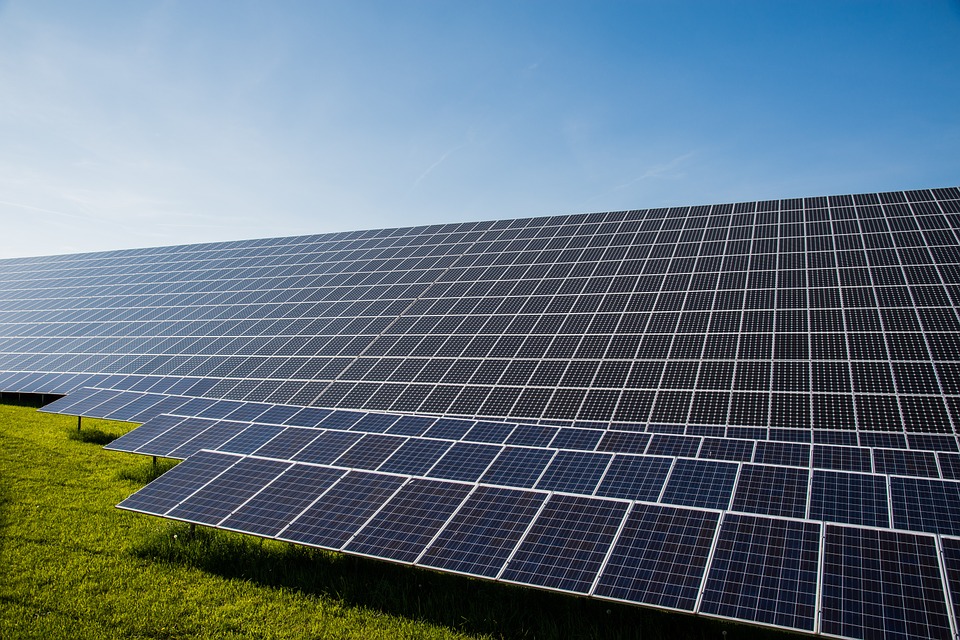
The Concept
Every building whether home, industry, institution or commercial establishment can generate some solar power by installing PV panels on the roof top. Sometimes this can be a BIPV(building integrated).
Some Key Benefits
Photovoltaic roof-top installations at the tail-end of the grid can enhance grid-stability and reduce losses
Savings in land requirement and costs
Savings in development of new transmission infrastructure
Creation of value from under-utilized /unutilized rooftops
Good choice for distributed power generation system
BIPV can enhance esthetics of buildings
Benefits of Roof top PV
At national level, reduces requirement of land for solar Power. It reduces need for additional transmission infrastructure
For consumers:
- Reduces the dependency on grid power.
- Mitigates diesel generator dependency.
- Long-term reliable power source.
- Day Peak load Demand
- T&D and conversion losses as power is consumed at the point of generation. Most suitable for commercial establishments
- Max generation during peak usage time.
- Solar power cost is close to the commercial power cost.
- Solar power cost is fixed for 25 years
For Discoms, it reduces
Solar Water Heating
Aside from cost and greenhouse gas emissions savings, the beauty of a solar hot water system is its relative simplicity and durability!
There are two types of collectors used in a solar hot water service:
- flat plate collectors (suitable where tank roof mounting is required).
- Evacuated tubes (more efficient and great for frost prone areas).
Flat Plate Collectors
Flat plate collectors work on copper pipes running through a glass covered collector, often connected to a water storage tank on the roof. The sun heats the copperpipes and the resulting hot water is thermo-siphoned out of storage tank.
Benefits
- Hot water throughout the year. The system works all year round, though you'll need to heat the water further with a boiler or immersion heater during the winter months.
- Reduced energy bills. Sunlight is free, so once you've paid for the initial installation your hot water costs will be reduced.
- Lower carbon footprint. Solar hot water is a green, renewable heating system and can reduce your carbon dioxide emissions.
Evacuated Tube Solar Collectors
Evacuated tubes use (as the name suggests) consist two glass tubes fused at the top and bottom. The space between the two tubes is evacuated to form a vacuum. A copper pipe (called a heat pipe) running through the centre of the tube meets a common manifold that is then connected to a slow flow circulation pump that pumps water to a storage tank below, thus heating the water during the day. The hot water can be used at night or the next day due to the insulation of the tank.
The evacuation tube systems are superior as they can extract the heat out of the air on a humid day and don’t need direct sunlight. Due to the vacuum inside the glass tube, the total efficiency in all areas is higher and there’s better performance when the sun is not at an optimum angle – such as when it’s early in the morning or in the late afternoon.
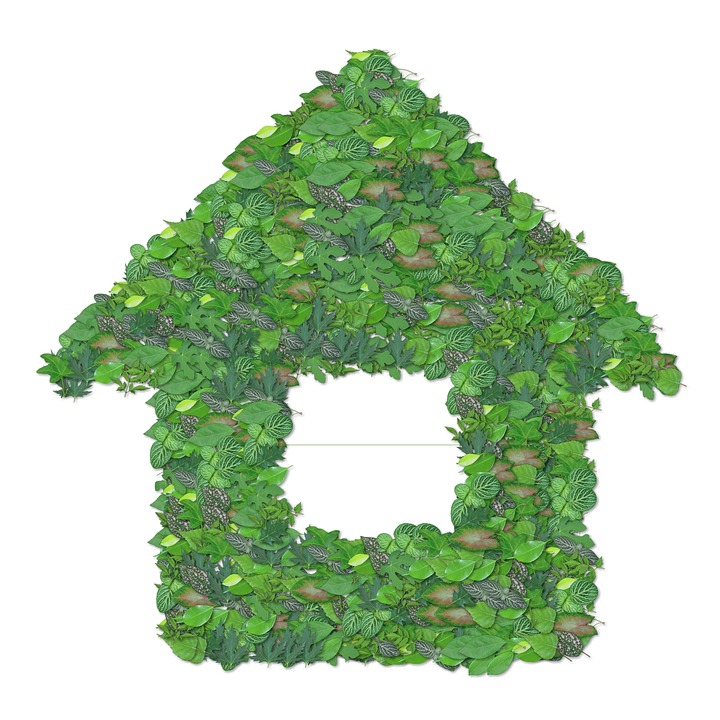
Green Building Certification, Energy & Safety audit:
We have gained comprehensive knowledge about various aspects of Green Building and rating systems. We offer Services to facilitate various Green Building Certifications such as those offered by IGBC, USGBC, GRIHA& Eco-Housing as applicable for residential, commercial, institutional and factory buildings.
We also offer services for auditing the energy performance and safety performance of existing buildings. The audit result in recommendations for changes in assets and operations which can deliver improved energy performance for the property and basic safety and disaster management for occupants.
Environmental Management Systems
- Rainwater Harvesting Systems.
- Solar Water Heating Systems.
- Borewell Installation.
- Sewage Treatment Plant [STP] & Effluent Treatment Plant [ETP].
- Wind Energy Systems and Solar PV Hybrid Systems.
- Green Building Consultancy & Material.
- Landscaping & Vermi – Composting Solutions.
Domestic Systems
- Ultra Violet Water Purifiers [ DrinkSafe ] of 200 Lph to 100,000 Lph Capacities.
- Reverse Osmosis Purifier [ HydrodewMax ].
Commercial Systems
- Automated Pre Cooler Water Purification Systems[ DS Series].
- Hot And Cold Water Dispensers [ Aqua D].
- Customised Coolers and Cold Storages.
- Swimming pool projects.
- Water bodies.
Industrial Systems
- Sand Filters, Activated Carbon Filters , Sediment Filters.
- Centralised Ultra Violet Water Purifiers of 200 Lph To 100,000 Lph Capacities.
- Reverse Osmosis Systems [R.O].
- Non-Chemical Anti Scaling Devices [ScaleGuard].
- De-Mineralisation and Mix Bed D.M Plants.
- Centralised Gas and Electrical Water Heating Systems.
- Hydro Pneumatic Water pumps and Water Distribution Systems.
- Sensor Based Pump Automation System.
Go Green
Buildings have always been one of the most secure investments, but did u know that building could be made profitable, and yes, healthy places to live in and work too. All u need to do is – Go Green
Incorporating excellent practices that result in environment protection, water conservation, energy efficiency, usage of recycled products and renewable energy, is termed as going green.
In the long run, these practices are extremely healthy for the bottom line and for the occupants of the green building as well.
What is a Green Building
A green building is one that is environmentally responsible, profitable and a healthy place to live and work. Green building ensures that waste is minimised at every stage during the constructive process and operation of the building, resulting in low costs.
Green building applies to both existing and the new constructions, from a simple commercial space to large development projects.
Benefits of Green Building
Green buildings offer a range of economic and environmental benefits
- 30% to 40% reduction in operation costs.
- Green Corporate image.
- Health and safety of building occupants.
- Enhanced occupants comfort.
- Improve productivity of occupants.
- Imbibe best operational practices from day one.
- Incorporate latest techniques and technologies.
Did you know?
- Buildings use 40 % of the worlds total energy, 23% of harvested wood and 16% of fresh water.
- People spend 90% of their time indoors.
- Air quality is 2- 5 times worse than that outside.
Features of Green Building
- Measures to prevent erosion of soil.
- Rainwater Harvesting.
- Landscape to Reduce heat island.
- Solar Water Heating to save electricity.
- 25-30% reductions in usage of potable water.
- 100% recycling of waste water.
- Water efficient landscaping and solar.
- Use of world class energy efficient practices.
- 30% reduction in energy over normal buildings.
- Use of on- site renewable energy like water.
- Storage and collection of recyclables.
- Reuse of building materials.
- Use of certified wood.
- Use of low VOC content material [ paint , carpet, sealable ]
- System controls to maintain IAQ


Waterwise Water Proofing.
Causes For Leakages
The below mentioned reasons are the principle causes of leakage
- Poor constructional workmanship and no precautionary measures.
- Poor workmanship affects the structure and leads to expansion and contraction over a period of time, which leads to cracks on the walls, and damages the structure overtime and leads to leakages.
- This is specially noted on terraces/roofs where the contractors do not take proper care during the "Brick Bat Coba" work.
- Plastering and tiling job is not done properly, which leads to cracks on the surface resulting in entire terrace/roof surface being damaged.
- It is also observed that due to improper mixing ratios of cement, sand and water, while constructing Terrace or parapet walls, cracks are developed on the joints, Chajjas and parapet walls
- It is normal practice in Mumbai to use Sea Sand while constructing structures. This sea sand also contains muddy portion proportion, which is also directly responsible for damaging the structure.A typical example of this is small plants and shrubs coming out of the cracks on the structures after some time.
How To Prevent Leakages.
The modern engineering technology has come out with an innovative material known as “Polymer base waterproofing compound” which is specially manufactured for the Indian climate. It has been Proved that polymer based waterproofing has different kinds of uses in the construction field. Different kinds of “Polymer base water proofing compounds” are available for different kinds of problems. Today most of the consultant architects and engineers recommend the use of this compound fro solving the leakage problem.
To keep pace with this growing industry we use three different kinds of polymer compounds.
Advantages
- It stops leakages, seepages and dampness of water and finally gives full waterproofing properties to the surface on which it is applied.
- It prevents the growth of algae or fungus on the surface and thus protects the surface from damage.
- It resists the precipitation of salt from the bricks and other masonry structures.
- When applied, it penetrates the hairline cracks, fills the cracks completely and forms a sound film on the surface in turn stopping all sorts of leakages.
Physical Properties
- Highly water repellant.
- Single component liquid compound.
- Resistant to ultra violet rays and chemicals.
- Provides best bonding and adhesions with structures.
- Can withstand changes in climate from 5 degree c to 90 degree c.
- Can be directly applied on the surface of the building and can also be mixed with cement plaster, mortar, concrete, cement paint and distemper paint, thus provides multipurpose application uses.
- Easy to brush or spray with no side effects.
- Long life span with no wastage.
How does Acrylic polymer compound work?
When applied, the compound forms a very hard and strong film on the structure, filling the voids completely and providing waterproofing, anti fungal, and salt resisting properties to the structure. Application is done by brush or spray.
Internal/External Treatment with Acrylic Polymer CompoundMinor Leakages / Damages
In case of minor leakages / damages inside or outside the room, it is observed that usually the paint gets peeled off. To prevent this it is recommended the paint film be completely removed and the surface cleaned. Thereafter at least two coats of ‘Acrylic Polymer’ base waterproofing compound to be applied to the make the surface fully leak-proof.
Major Dampness and Continuous Seepage of Water
In case of major dampness and continuous seepage of water through the wall surface. It is advisable to remove the affected loose plaster and the surface by fully cleaned. Thereafter one primer coat of compound by diluting with equal quantity of water is applied on the affected surface. Once done, add the compound in the ratio of 2 Ltrs. of polymer compound: 50 kgs cement and redo the plastering. Allow it to dry for 48 hours at least.


Landscaping
"Landscaping" a property means you must be making improvements (or maintaining past improvements) on that property grounds -- either in a practical or in an aesthetic way. Everything on your property that stands outside of the home itself is part of a property's landscaping.
Softscape
It refers to the live horticultural elements of a landscape. Softscaping can include flowers, plants, shrubs, trees, flower beds, and duties like weed/nuisance management, grading, planting, mowing, trimming, aerating, spraying, and digging for everything from plants and shrubs, to flower beds. Wheel barrows and manual tools like rakes, shovels, picks, and gas power tools are commonly used.
Hardscape
Hardscape refers to hard landscape materials in the built environment structures that are incorporated into a landscape.This can include paved areas, driveways, retaining walls, sleeper walls, stairs, walkways, and any other landscaping made up of hard wearing materials such as wood, stone, concrete etc. as opposed to Softscape, the horticultural elements of a landscape.
Elements Of Landscaping
Line:
Lines can be horizontal, vertical, diagonal or curved. Lines are used in landscape designs to accentuate an object, control movement or draw attention to a focal point such as a fire pit or water feature.
Lines can be real (actual) or perceived (implied). Perceived lines are created from a series of objects organized in such a fashion to make it seem as though a line is present.
Form:
Forms are associated with three-dimensional objects. Plants come in many forms including round, upright, spreading, etc.
Colour:
Colour tends to be the most used (as well as over-used) element of landscape design composition.Warm and Cool colours combinations have different visual impacts on the landscape. Colour is an important design consideration for both plants and Hardscape.
Texture:
Texture is a surface characteristic that can be divided into three categories: Coarse, Medium and Fine. Plants, pavements and other site elements all have their own texture. Contrasting textures add interest to a landscape and should play an important role in design composition.
Understanding these elements of design composition is an integral part of laying the foundation for good design and ensuring you will love your landscaping for years.
Principles Of Landscaping
Scale:
Evokes Emotional Connection and is Closely Related to Colour.
Absolute Scale:
Absolute Scale relates to the comparative value of landscape elements to a fixed structure (house).
Relative Scale:
Relates to comparative sizes or “values” of objects in the landscape. Relative scale is very emotionally charged and closely linked to color. It may create a feeling of relaxation and peacefulness or one of energy and action.
High Scale:
High Scale promotes action. It is used around large buildings and in large spaces to fill the space. Use of high scale in small spaces makes the space feel smaller.
Low Scale:
Low Scale is relaxing and calming. It is used in the home landscape to give a feeling of peace and relaxation.
Balance:
Equilibrium on Left and Right Sides.
Formal Balance:
Formal balance repeats the same left and right, giving stability, stateliness, and dignity.
Informal Balance:
Differs from left to right giving curiosity, movement, and feels alive.
Simplicity & Variety:
Simplicity and variety work together to balance each other. Simplicity is a degree of repetition rather than constant change, creating unity. Variety is diversity and contrast in form, texture, and colour preventing monotony.
- For simplicity, repeat some plant materials in sweeps and groupings.
- For variety, fill in with other plants.
- Avoid creating a horticultural zoo (one of this, two of that).
- Zipper plantings (like red-white-red-white) lack simplicity and variety.
Emphasis:
Domination & Subordination of Elements.
The human mind looks for dominance and subordination in life. As we look at a landscape from any direction, we need to see dominance and subordination of various elements. If we do not find it, we withdraw from the landscape. Some gardens lack the dominant element. Others suffer with too many dominate elements screaming to be the focal point. Emphasis can be achieved through different sizes, bold shapes, groupings, and the unusual or unexpected.
All Other Services
- RO UV and Water ATM: Water ATM tracks water quality by continuously monitoring the TDS of the water. It is supported by in-house water purification plant having a capacity of 500LPH. The best part about this ATM is that it monitors the water dispensed from and refills to overhead tank.
- Environment clearance, CRZ clearance, Forest clearance.
- Environment Impact Assessment Studies (EIA).
- Preparation of Environment Management Plan (EMP).
- Consent to establish and operate from State Pollution Control Board.
- Green Building Certification.
- Baseline environment studies and environmental monitoring.
- Feasibility studies of environmental service.
- Social Impact Assessment studies (SIA).
- Environmental Status Report (ESR).
- Environmental Audit and Statement Reports.
- Energy Audit.
- Renewable energy certificates.
- Formulation of CSR and CER policy and its implementation.
- Training and coordination for environmental services.
